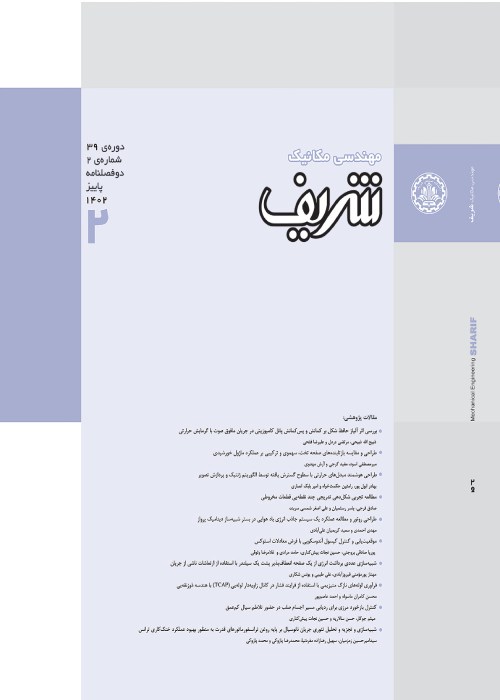Simulation of a Double Slope Solar Still with Rotating External Reflector
Author(s):
Article Type:
Research/Original Article (دارای رتبه معتبر)
Abstract:
In recent years, for some reasons such as population growth, environmental pollution, industrialization, and urbanization, drinking water has been challenging to access. Therefore, solar still is considered one of the promising available technologies to produce drinking water because of its advantages such as abundance, cleanliness, and economics. However, their productivity is relatively low, and present designs need to improve and develop. To achieve high desalination performance, researchers have made many efforts to build different designs of solar desalination and found that desalination made with reflectors would be a good idea. Reflectors in solar desalination can be divided into three different sectors: indoor reflectors, external reflectors, and a combination of indoor and outdoor reflectors. Internal or external reflectors concentrate solar radiation on the basin and can increase the desalination performance. On the other hand, time-consuming and expensive solar manufacturing processes still lead researchers to use computational fluid dynamics. Therefore, the present study was done to simulate a double slope solar still with an external rotating reflector, in which sun radiation is concentrated on the basin water, resulting in an increase in productivity. Thus, equations of continuity, momentum, energy, and concentration conservation were solved using Comsol Multiphysics software by assuming the fluid as single-phase humid air, laminar natural convection, and steady-state condition 2D geometry. The simulation was done for two primary angles, and the results were compared with the experimental data available for 20th November 2017 in Dezful weather conditions (longitude and latitude 48.36 and 32.42) located in southwestern Iran. It was shown that there was good agreement between the results. Moreover, it was shown that by changing the external reflector's primary angle, the temperature of water and glass increased by about 7% and 4%, respectively. In addition, the Nusselt number decreased by 5%, which caused an increase in the productivity rate by about 32%.
Keywords:
Language:
Persian
Published:
Mechanical Engineering Sharif, Volume:37 Issue: 2, 2022
Pages:
21 to 28
magiran.com/p2375698
دانلود و مطالعه متن این مقاله با یکی از روشهای زیر امکان پذیر است:
اشتراک شخصی
با عضویت و پرداخت آنلاین حق اشتراک یکساله به مبلغ 1,390,000ريال میتوانید 70 عنوان مطلب دانلود کنید!
اشتراک سازمانی
به کتابخانه دانشگاه یا محل کار خود پیشنهاد کنید تا اشتراک سازمانی این پایگاه را برای دسترسی نامحدود همه کاربران به متن مطالب تهیه نمایند!
توجه!
- حق عضویت دریافتی صرف حمایت از نشریات عضو و نگهداری، تکمیل و توسعه مگیران میشود.
- پرداخت حق اشتراک و دانلود مقالات اجازه بازنشر آن در سایر رسانههای چاپی و دیجیتال را به کاربر نمیدهد.
In order to view content subscription is required
Personal subscription
Subscribe magiran.com for 70 € euros via PayPal and download 70 articles during a year.
Organization subscription
Please contact us to subscribe your university or library for unlimited access!


